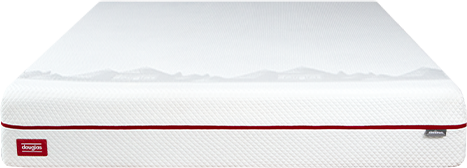Foam vs Spring Mattress (2024)
Updated: July 16, 2024When you’re buying a mattress, one of the first considerations is what type of mattress you want. But what are the differences between foam and spring mattresses? And which is right for you?
Foam mattresses typically use two or more layers of foam, which provides excellent motion isolation and pressure-point relief. Spring (or innerspring) mattresses have a thin layer of foam with metal coils beneath, giving them excellent edge support and a firmer feel.
In this article, we’ll take a close look at foam and spring mattresses. We’ll compare their pros and cons, describe their layer construction, and help you to make an informed decision—no matter what type of mattress or mattress size you’re shopping for.
Breakdown: Spring vs. Foam Mattresses
| Category | Spring Mattresses | Foam Mattresses |
|---|---|---|
Cost | $250–2,500+ | $500–2,000+ |
Feel | Firm and supportive feel that stops you from sinking deeply into the mattress | Contours around your body with different degrees of sinkage, depending on foam density |
Advantages | Often less expensive; responsive surface makes it easy to change positions | Good pressure-point relief; excellent motion isolation |
Disadvantages | Less motion isolation than foam mattresses
| Can trap heat, especially in mattresses with a softer feel
|
Best for… | Budget shoppers looking for a long-lasting mattress
| Budget shoppers looking for a comfortable mattress
|
READ MORE: What is a hybrid mattress?
What is a foam mattress?
A foam mattress typically uses at least two—and often three—layers of foam to cushion and support your body. The top (comfort) layer is usually the softest, with a higher-density bottom (support) layer beneath. There may be a transition layer in the middle.
Foam mattresses tend to provide better motion isolation and pressure-point relief than innerspring mattresses. There’s also more variety when it comes to foam, so mattresses can include advanced comfort and cooling features.
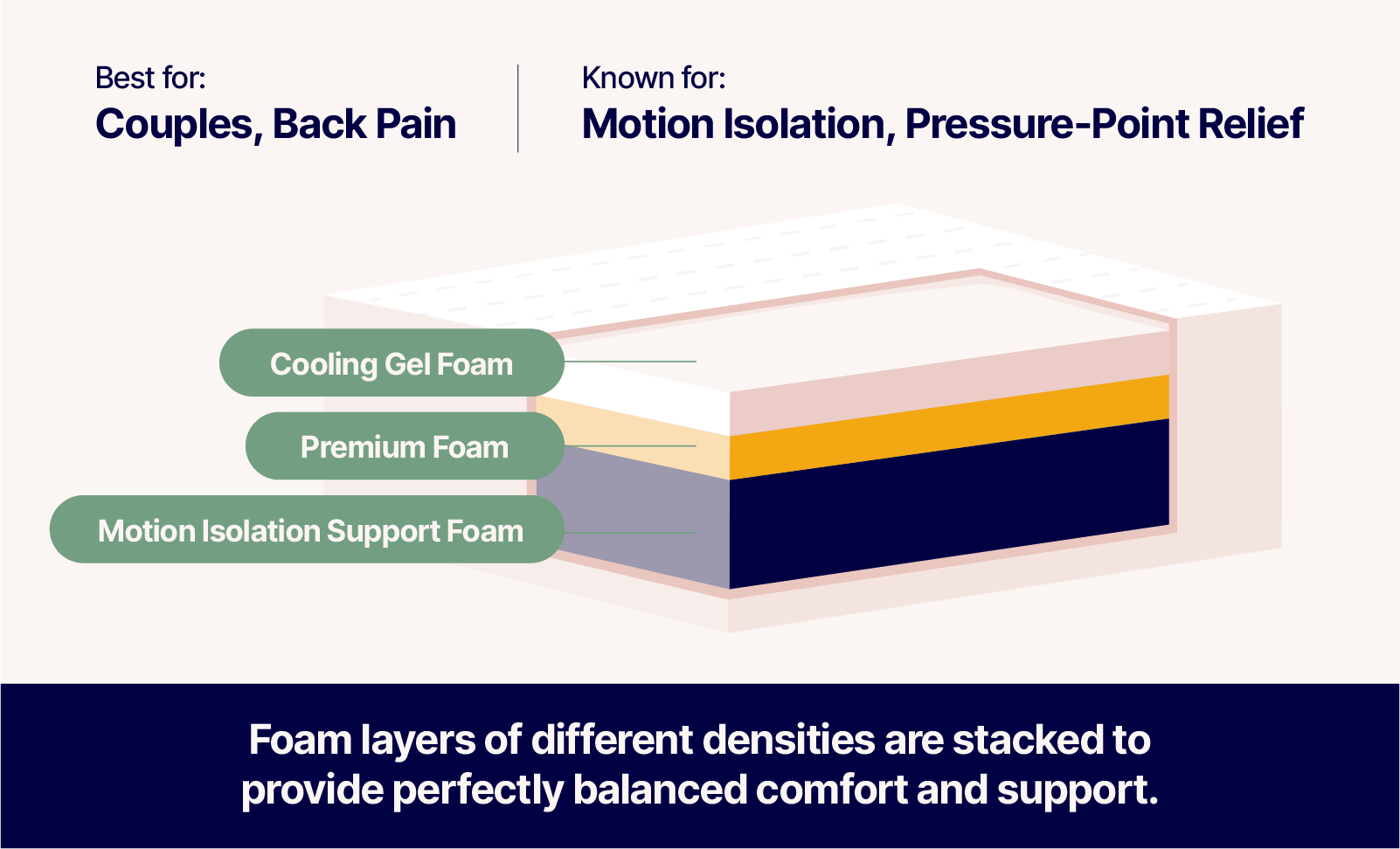
Foam Mattress Materials
Like the name suggests, foam mattresses feature multiple layers of foam. The most common types of foam used in mattress construction are memory foam, gel foam, poly foam, and latex foam.
- Memory foam responds to pressure and body heat by adjusting its shape. This lets it contour to your body and create a “hugging” sensation. Closed-cell memory foam tends to trap heat, but newer open-cell memory foam is more breathable and dissipates heat better. Memory foam is found in pressure-relieving mattresses like Octave.
- Gel foam is memory foam that uses cooling gel to enhance its heat dissipation. It’s most often found in a foam mattress’s comfort layer. It can be either infused directly into the foam or sit on top of it. This lets the upper mattress layer conduct heat away from your body while retaining all the body-contouring benefits of memory foam.
- Poly foam is both breathable and highly supportive. It can be less expensive to produce than other foams, and it can have different firmness levels depending on density. Poly foam is commonly used in the base of most foam mattresses. The support layer in Juno, for instance, is made using poly foam.
- Latex foam is highly responsive and durable. It can be made with natural or synthetic latex, or a blend of the two. Latex’s open-cell structure makes this type of foam excellent at dissipating heat. Latex is often more expensive to manufacture, meaning you can expect to pay more for a latex mattress. That said, advanced cooling mattresses like Octave Mirage and Octave Horizon contain latex and are still affordably priced.
These types of foam can also be aerated or perforated for breathability. This simply means that the foam layer will have structured holes that allow air to flow through.
Douglas Original is an excellent example of a foam mattress. Its top layer is gel foam, its transition layer is Elastex® (a latex foam substitute), and its bottom layer is denser poly foam. Here’s what those layers look like:
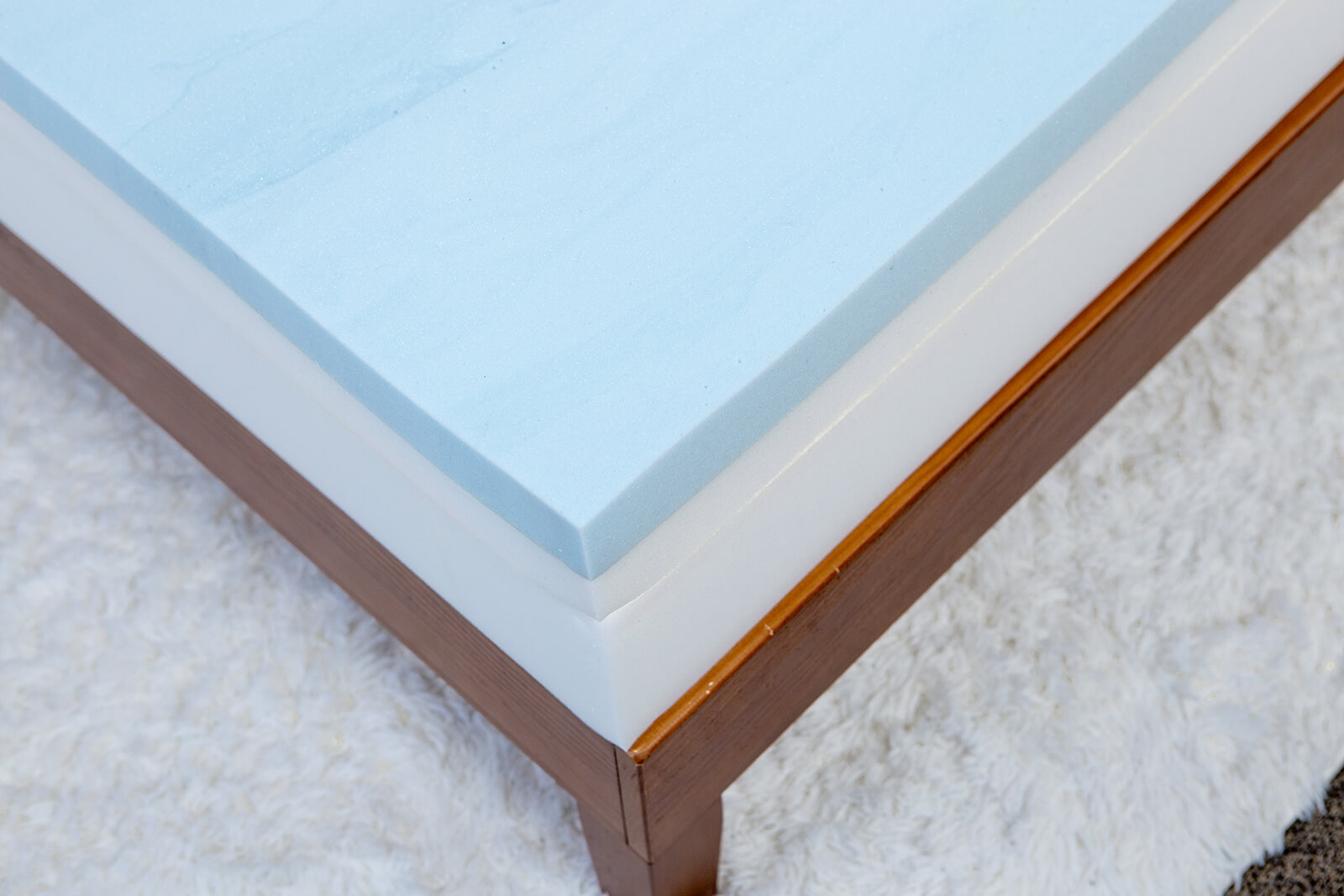
Foam Mattress Pros & Cons
Keep these pros and cons in mind if you’re considering a foam mattress:
| Pros | Cons |
|---|---|
|
|
What is a spring mattress?
Spring mattresses are perhaps the most traditional type of mattress. They use metal coils, often called innersprings, and tend to have a thin layer of foam on top. There may also be a foam layer beneath the coils.
Spring mattresses tend to be much firmer and bouncier than foam mattresses. They have excellent edge support and full-body support, making them better for back sleepers and heavy sleepers.
However, innerspring mattresses have less motion isolation than foam, since metal coils tend to conduct kinetic energy instead of absorbing it. This means you’ll likely feel your restless partner’s movements. You may also notice more noise from the metal coils.
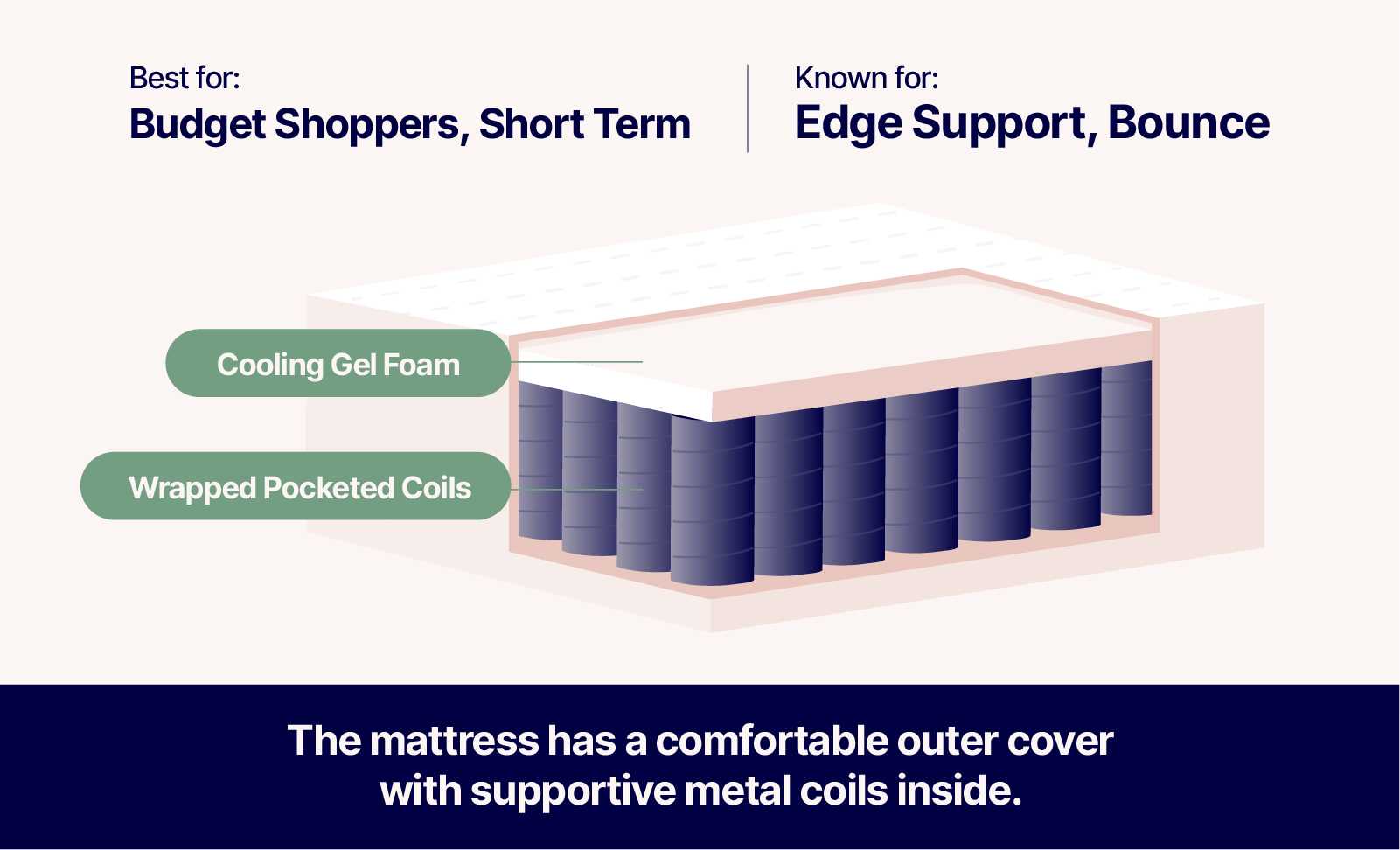
READ MORE: How long should a mattress last?
Spring Mattress Materials
Spring mattresses use rows of metal coils, usually made from steel. The gauge (thickness) of these coils determines how strong and supportive they are.
These coils are usually placed beneath one layer of foam, with an optional bottom foam layer. Each foam layer is usually less than 2″ thick, while the coil layer is 6″–10″ thick.
A variety of different coils can be used in innerspring mattresses. Some models use more than one type of coil. These are the coil types you’ll typically find in a spring mattress:
- Continuous coils are connected to each other at their tops and bottoms to provide support. These springs are long lasting but are known to be noisy.
- Bonnell coils have an hourglass shape and are often wired together for added strength. They’re durable but less supportive than other coil types, and they don’t isolate motion very well.
- Offset coils are similar to Bonnell coils, but the top and bottom sections of each coil are squared off. This gives them better motion isolation and support.
- Pocket coils are individually wrapped in fabric and aren’t linked with each other. This makes them much quieter and more responsive than other coil types.
- Micro coils have the same basic design as pocket coils, but they’re much smaller. Often found with larger pocket coils in a separate layer, micro coils help the mattress contour to your body.
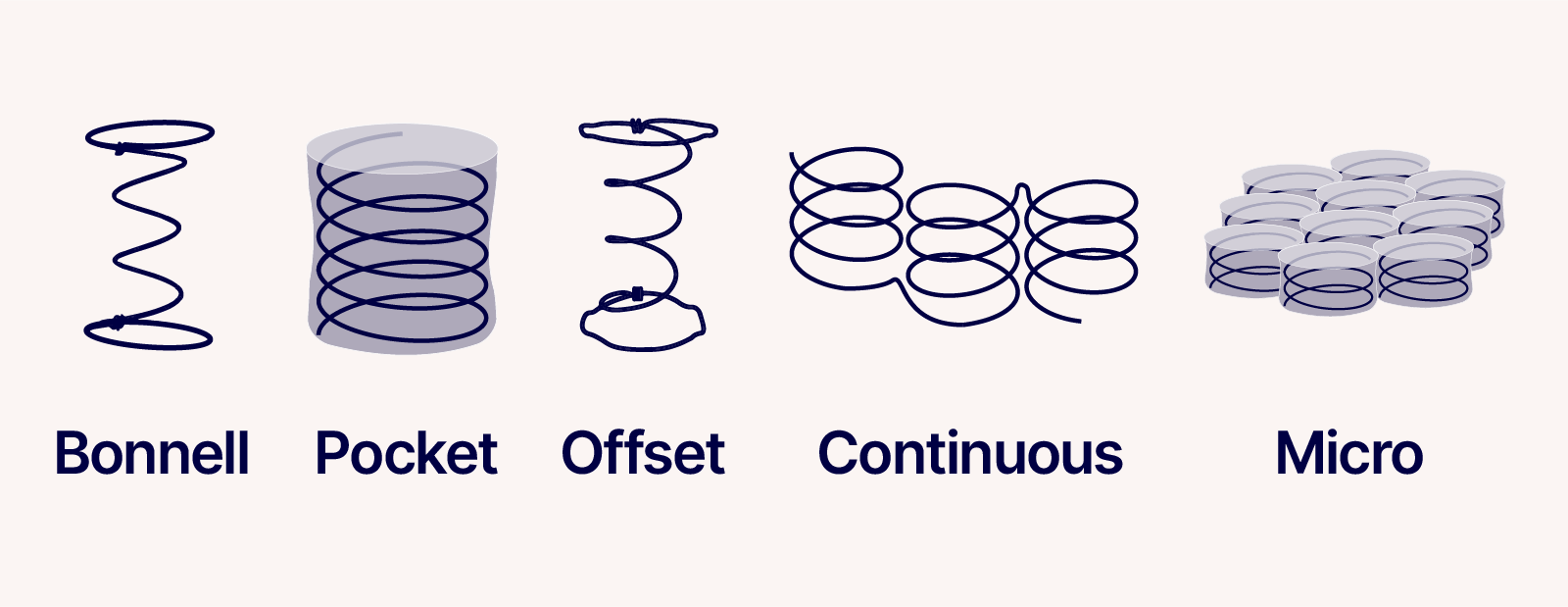
Saatva Classic is one example of an innerspring mattress. It combines a layer of pocket coils with a layer of connected Bonnell coils. Here’s what those layers look like inside a spring mattress:
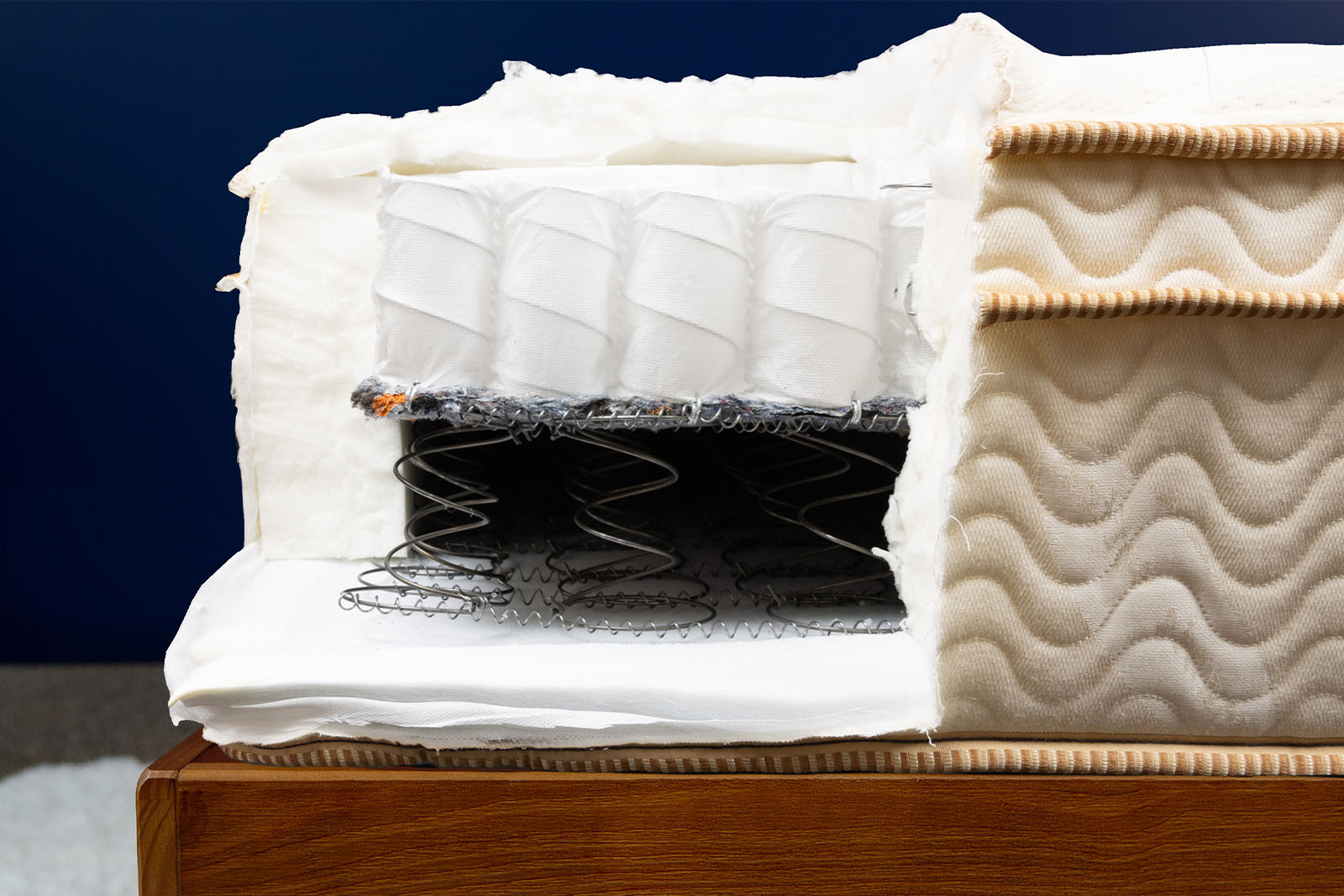
Spring Mattress Pros & Cons
Keep these pros and cons in mind if you’re considering an innerspring mattress:
| Pros | Cons |
|---|---|
|
|
Should you choose a foam mattress or a spring mattress?
Both foam and innerspring mattresses can provide good options for budget shoppers. But there are a few considerations that could sway you one way or the other.
Consider a foam mattress like Douglas, Juno, or Octave if you need pressure-point relief or want exceptional motion isolation. If you’re a hot sleeper, look for a foam mattress with cooling features to help keep temperatures comfortably.
Try a spring mattress if you need more support, responsiveness, and edge support. Spring mattresses could also be a good fit if you need a firmer mattress or have a heavier body type.
That said, you don’t necessarily have to pick one mattress type over the other. Hybrid mattresses like Logan & Cove combine the best of both worlds, using both foam and springs to create a sleep surface that works with all sleep styles.
READ MORE: Foam vs hybrid mattresses
Our goal is to provide the information you need to find the mattress that’s right for you. Get started with some of our most popular mattress shopping resources:
- Best Mattress Guides: Best Mattress Canada, Best Mattress In a Box
- Reviews: Douglas Original, Logan & Cove Choice, Juno, Octave Vista
- Comparisons: Douglas vs Endy, Douglas vs Casper
We use independent, third-party engineering firms (commissioned by us) with the APEGA stamp of approval to conduct mattress testing on our behalf, using publicly available data. We review and test all mattresses on over 40 criteria we think are important to you, including price, country of manufacture, sleep trial, warranty, features, materials used, motion isolation and edge support ratings, customer satisfaction reviews, returns, and refunds.
